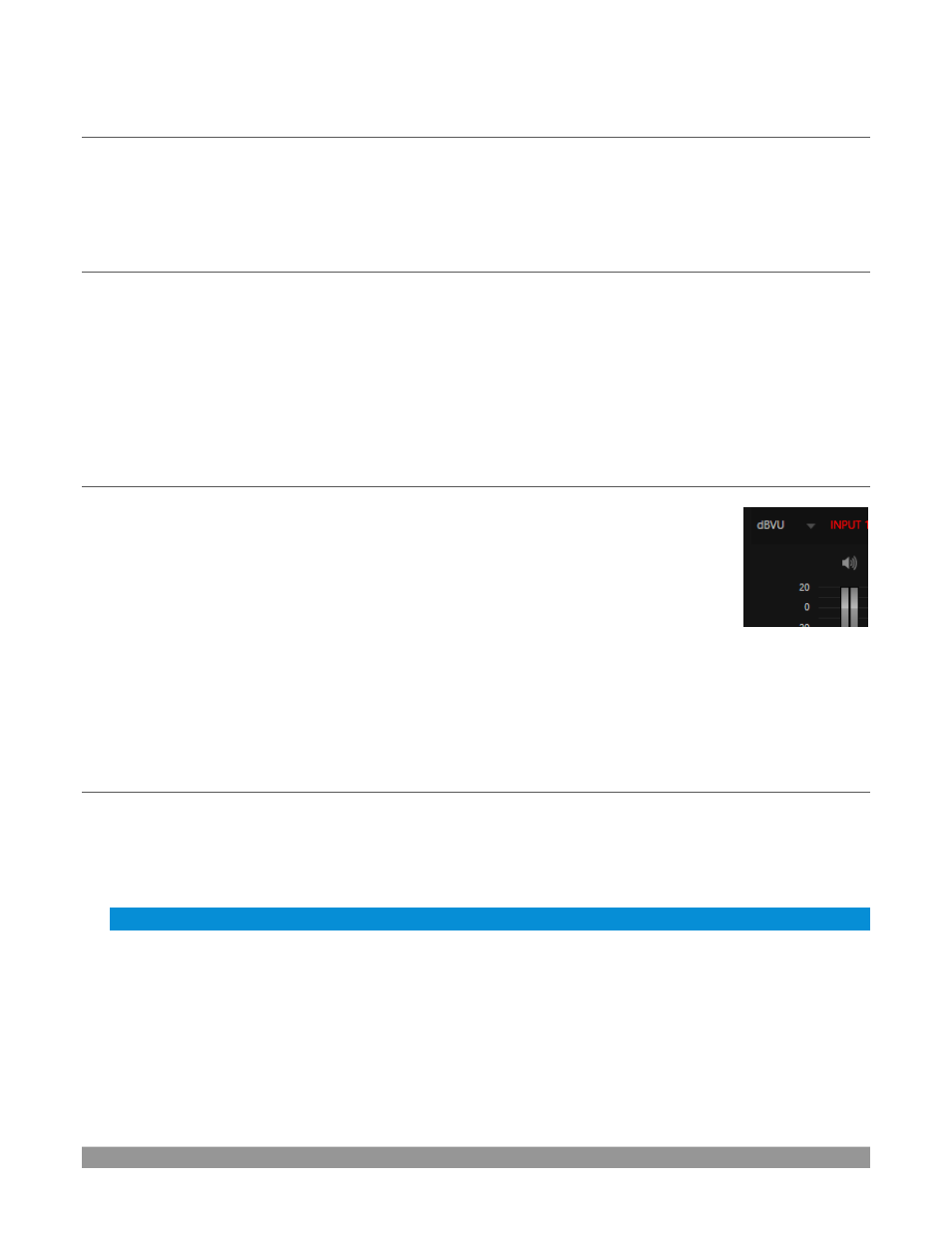Section 16.1 audio specifications, Section 16.2 headphones, Section 16.3 vu meter calibration – NewTek TriCaster TC1 (2 RU) User Manual
Page 176: Section 16.4 external sources

P a g e | 160
SECTION 16.1
AUDIO SPECIFICATIONS
Analog audio conforms to SMPTE RP-155. The maximum input/output level is +24 dBu. Nominal input level
is +4 dBu (-20dBFS), and the sample rate is 48 kHz. Levels above 0dBVU are shown in red in the
VU meters
,
to caution you that overly high levels can result in clipping in recordings.
SECTION 16.2
HEADPHONES
By default, headphones connected to the ¼” stereo
Phones
jack carry the first two channels of the audio
signal from the bus designated
Master 1
–
that is, the same audio carried by analog output connectors marked
as
Ch.
1
and
Ch.2
in the
OUT 1
group on the system’s backplane.
The
Headphone
output is also affected by
Solo
switches located at the bottom of each control group in the
Audio Mixer
. When
Solo
is enabled for one or more sources
–
or outputs
–
only
the soloed sources are sent to
the connector. (See
in Section 16.7.2 for more information on this feature.)
SECTION 16.3
VU METER CALIBRATION
VU
(Volume Unit)
meters
are located right above the
Volume
control sliders throughout
the
Mixer
. The calibration of the
VU meters
can be changed to suit your preference.
A menu at left beside the
Input
labels opens a small menu (Figure 198) offering three
options as follows:
•
dBVU
–
most
familiar to users of typical analog audio mixers
•
dBFS
–
dB ‘Full Scale’ –
the digital standard; see the heading Audio Headroom in Section 3.12
•
dBu
–
based on a voltage of 0.775 VRMS (a shy scale rarely seen in public, supplied for completeness,
comparison, and the amusement of audiophiles)
SECTION 16.4
EXTERNAL SOURCES
Columns in the first set of control groups are numbered as
Input 1-(varies by model).
Each of these can
be
assigned to any
available audio source
–
whether analog (line level) sound supplied to rear panel connectors,
SDI embedded audio from one of the four SDI inputs, available NDI source, or other system audio source
(including network audio sources like Audinate’s Dante™, with appropriate drivers
.
*Note: Dante support requires an inexpensive user lic
ense from Audinate™.
You may choose to think of these audio sources as being associated with the same-numbered
video
inputs in
the nearby rows on the rear connector panel. This linkage, though the default, is not strictly enforced,
however. You can connect directly to any external audio source in the
Advanced Configuration
panel (see
Section 16.10). Also, for reasons of your own, you may well prefer to treat various audio sources as
independent of the nominally associated video input. The
Follow
(audio follows video) features play an
important role in this context
–
see the sub-heading Follow Program Video in Section 16.10.2.
FIGURE 198
